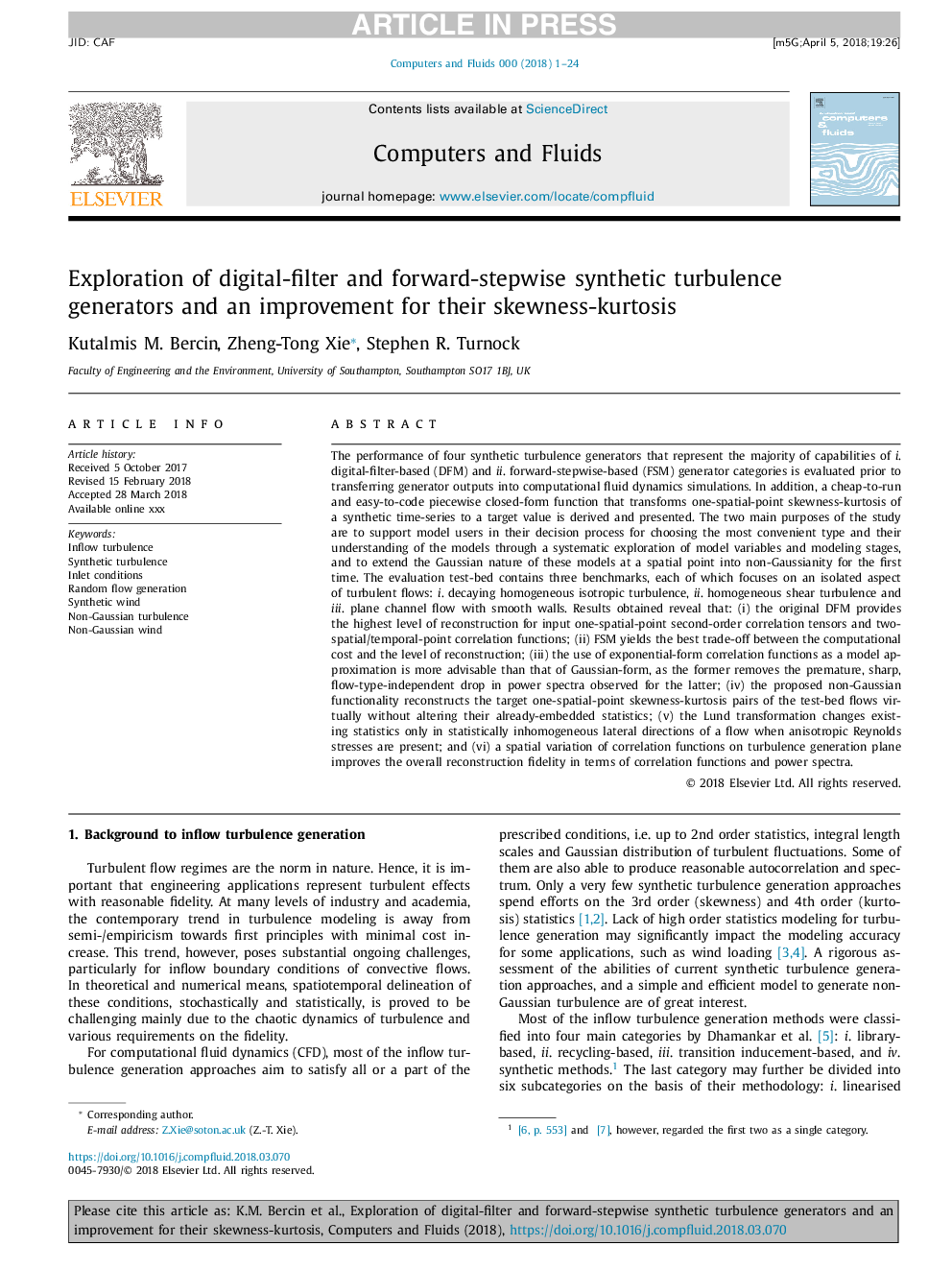| Article ID | Journal | Published Year | Pages | File Type |
|---|---|---|---|---|
| 7155849 | Computers & Fluids | 2018 | 24 Pages |
Abstract
The performance of four synthetic turbulence generators that represent the majority of capabilities of i. digital-filter-based (DFM) and ii. forward-stepwise-based (FSM) generator categories is evaluated prior to transferring generator outputs into computational fluid dynamics simulations. In addition, a cheap-to-run and easy-to-code piecewise closed-form function that transforms one-spatial-point skewness-kurtosis of a synthetic time-series to a target value is derived and presented. The two main purposes of the study are to support model users in their decision process for choosing the most convenient type and their understanding of the models through a systematic exploration of model variables and modeling stages, and to extend the Gaussian nature of these models at a spatial point into non-Gaussianity for the first time. The evaluation test-bed contains three benchmarks, each of which focuses on an isolated aspect of turbulent flows: i. decaying homogeneous isotropic turbulence, ii. homogeneous shear turbulence and iii. plane channel flow with smooth walls. Results obtained reveal that: (i) the original DFM provides the highest level of reconstruction for input one-spatial-point second-order correlation tensors and two-spatial/temporal-point correlation functions; (ii) FSM yields the best trade-off between the computational cost and the level of reconstruction; (iii) the use of exponential-form correlation functions as a model approximation is more advisable than that of Gaussian-form, as the former removes the premature, sharp, flow-type-independent drop in power spectra observed for the latter; (iv) the proposed non-Gaussian functionality reconstructs the target one-spatial-point skewness-kurtosis pairs of the test-bed flows virtually without altering their already-embedded statistics; (v) the Lund transformation changes existing statistics only in statistically inhomogeneous lateral directions of a flow when anisotropic Reynolds stresses are present; and (vi) a spatial variation of correlation functions on turbulence generation plane improves the overall reconstruction fidelity in terms of correlation functions and power spectra.
Related Topics
Physical Sciences and Engineering
Engineering
Computational Mechanics
Authors
Kutalmis M. Bercin, Zheng-Tong Xie, Stephen R. Turnock,
